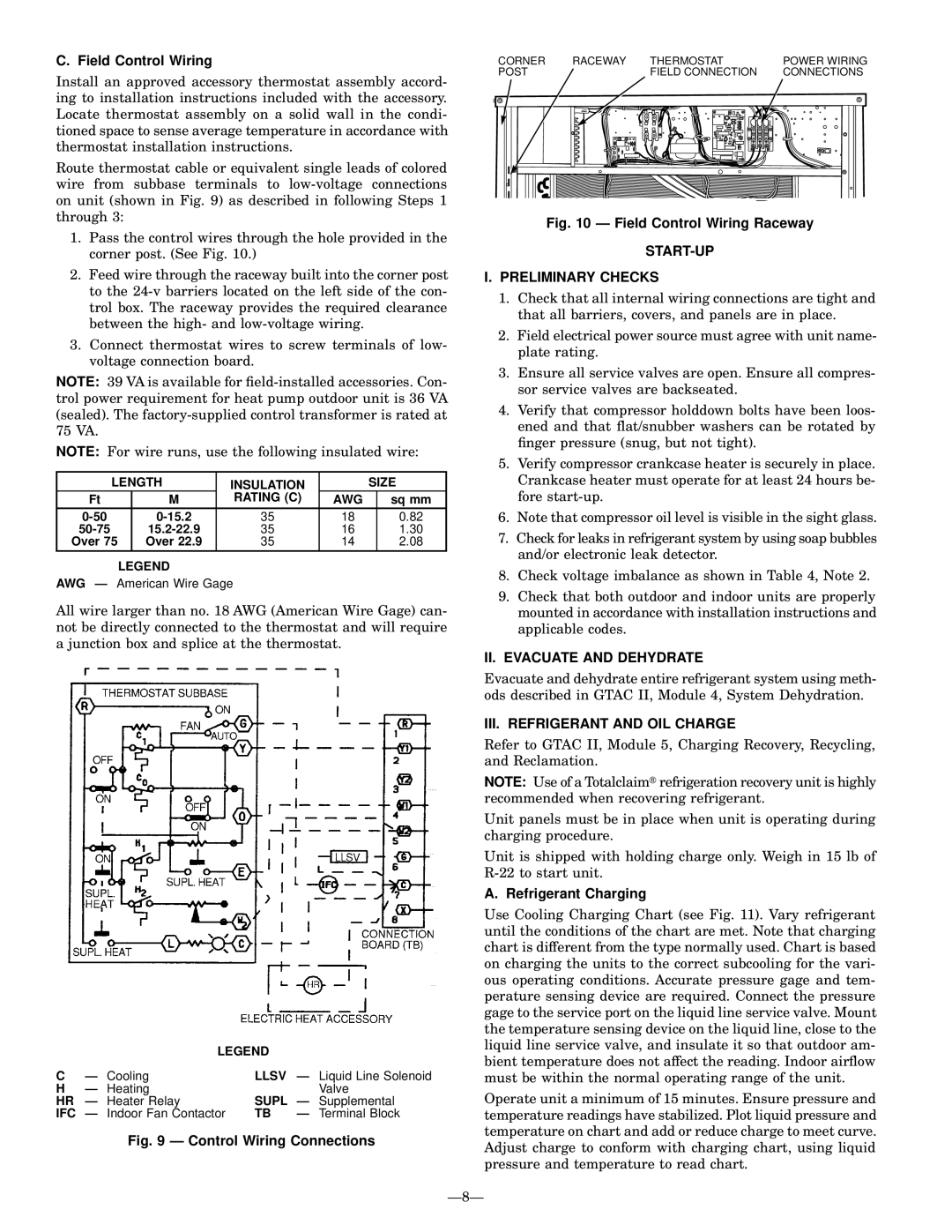575A specifications
The Bryant 575A is a prominent model in Bryant's lineup of heating, ventilation, and air conditioning (HVAC) systems, known for its reliability and efficiency. Designed with advanced technologies and innovative features, the Bryant 575A is an excellent choice for both residential and light commercial applications.One of the standout features of the Bryant 575A is its impressive energy efficiency. With a Seasonal Energy Efficiency Ratio (SEER) rating that significantly surpasses the minimum standards, the 575A helps homeowners reduce their energy bills while maintaining optimal comfort levels. The system employs variable-speed technology, allowing for precise temperature control and enhanced humidity management. This ensures that the indoor environment remains comfortable year-round, regardless of outdoor conditions.
Incorporating advanced refrigerant management, the Bryant 575A utilizes environmentally friendly R-410A refrigerant. This refrigerant not only minimizes ozone depletion potential but also enhances the overall performance of the system, allowing for efficient heat exchange and quick temperature adjustments. The system's efficiency is further optimized by its multi-stage cooling capabilities, which allow it to adapt to varying cooling loads and maintain consistent indoor temperatures.
The Bryant 575A is built with reliability in mind, featuring durable construction and quality components designed to withstand the rigors of daily use. Its compact design makes it easy to install in various settings, and its low profile ensures it can fit into tight spaces without compromising performance. Additionally, the system is designed for quiet operation, making it an ideal choice for residential areas where noise may be a concern.
Another significant aspect of the Bryant 575A is its compatibility with Bryant's intelligent thermostat technology. The system can seamlessly integrate with smart home setups, allowing homeowners to control their HVAC systems remotely via smartphone apps or home automation systems. This convenience not only enhances user experience but also contributes to energy savings by allowing for more precise control over heating and cooling schedules.
In summary, the Bryant 575A embodies the blend of efficiency, reliability, and advanced technology, making it a top choice for those seeking a high-performance HVAC solution. With features designed to optimize comfort and energy use, the Bryant 575A stands out as a strong contender in the competitive HVAC market.

